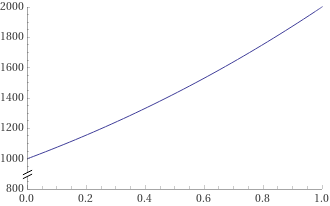
N(t)=1+(N0L−1)e−ktLN(1)=2000=1+(100010000−1)e−k100002000=1+9e−k100001+9e−k=59e−k=4e−k=94=0.4˙k=0.4˙1=0.81093N(t)=1+9e−0.81093t10000N′(t)=(1+9e−0.81093t)27298.37N′′(t)=10000((1+9e−0.81093t)3106.532e−1.62186t−(1+9e−0.81093t)25.91847e−0.81093t)The time at which the population is increasingmost rapidly is the value oftwhenN′′(t)=0,10000((1+9e−0.81093t)3106.532e−1.62186t−(1+9e−0.81093t)25.91847e−0.81093t)=01065320e−1.62186t−591847e−0.81093t(1+9e−0.81093t)=0Letp=e−0.81093t1065320p2−59184.7p(1+9p)=01065320p2−59184.7p−532662.3p2=0532657.7p2−59184.7p=0p=0,0.11111e−0.81093t=0.11111,t=2.70952≈2.7hours∴The time at which the population is increasingmost rapidly is2.7hours.


Comments